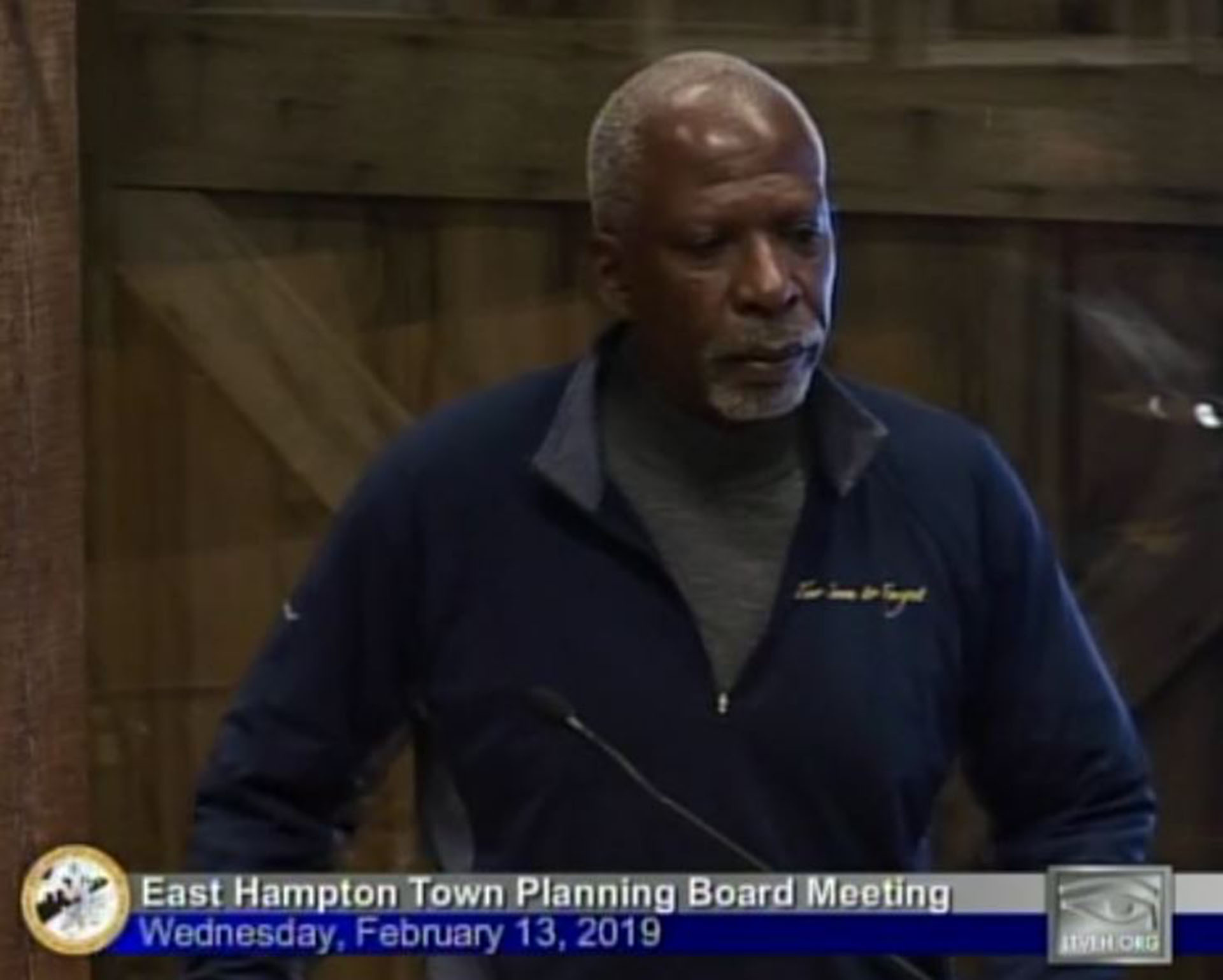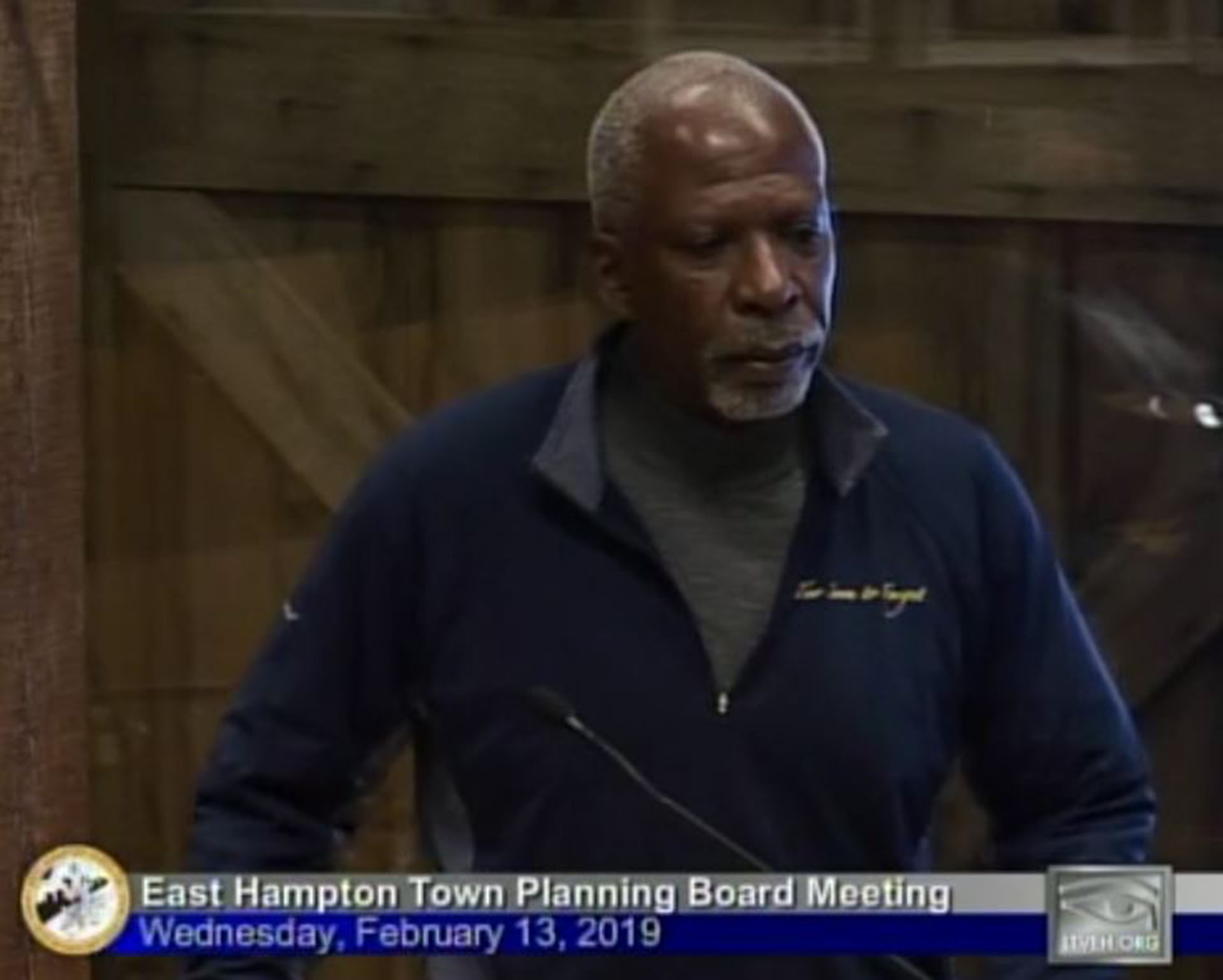Dan Gasby Appeals To East Hampton Town


Dan Gasby has been seemingly candid and forthright in recent months when speaking in public about his wife B. Smith’s descent into the dark, bleak world that is unique to those suffering from Alzheimer’s disease, and the resulting care that condition entails. That appeared to be the case as well, when he addressed the East Hampton Town Planning Board on Wednesday, February 13.
Gasby was before the board seeking a special permit for clearing already completed on the couple’s Two Holes of Water property. The 11-acre site is in a district considered vital to the health of East Hampton Town’s drinking water in the underground aquifer in the area. The town says Gasby has cleared a half-acre of native underbrush where such clearing is banned unless the property owner obtains a special permit from the planning board.
Barbara Elaine Smith, the famed restaurateur and fashion maven, was diagnosed with Alzheimer’s in 2014.
Gasby told the board that he and his wife have been members of the community for well over 20 years, during most of that time running the B. Smith restaurant on the Long Wharf in Sag Harbor. That restaurant, along with her other two establishments, one in Manhattan, the other, Washington, D.C., were closed after she was diagnosed.
The couple owned a beachfront house on Sound View Drive in Sag Harbor for many years.
“After the diagnosis of her having Alzheimer’s, it became apparent that living on the beach, living by the water, was a dangerous situation,” Gasby said. “She was constantly escaping. She would end up at the American Hotel.”
Gasby continued, “The police in Sag Harbor, who were fantastic, always knew that if she were walking down Route 114 or she was on Hampton Street or whatever, she would be picked up. What became a little scarier was that when she saw somebody who looked like me, she would get in the car with them. It became a situation where, because we were on the beach and had sliding glass doors, we never knew which way she would go.”
Gasby said he decided to sell the Sag Harbor house. According to online real estate records, Gasby sold the Sound View Drive property in early 2017 for $7.75 million, while, at about the same time, purchasing the Two Holes of Water residence for $2 million. “I wanted to ensure her safety,” he said. “We found this wonderful property in a wooded area, but more importantly, roughly four acres of it is fenced in, and it has a gate.”
He explained that they have five very large dogs. “My wife and I never had children. The dogs became like surrogate kids, and she would talk to them, ‘Come here, sit down.’” Gasby continued, “When you are living with someone who has Alzheimer’s, time is special, and the moments that you have when you see a smile on their face you appreciate.”
‘Not Based On Vanity’
A large, fenced-in dog run was created on the property behind the house by removing low-lying shrubbery such as black huckleberry and lowbush blueberry, while leaving the oak tree canopy intact. Smith could roam through the area with her dogs, while her caregivers could keep an eye on her.
The shrubbery is considered by the town a vital natural agent in cleansing water as it makes its way down to the aquifer.
After she was diagnosed, Gasby and Smith also gave up their Manhattan Central Park South residence. Being in Central Park gave Smith joy, Gasby said, but for him and her caregivers, it was terrifying. “We left the city because she would get confused, and if you turned your back, and she was gone, you never knew where she would be. She could be on the subway, she could be on one street, then turn a corner and walk into a store.”
Gasby then addressed the issue at hand. “The over-clearing that we did is not based on vanity. It was not based on some architectural desire. It was done to allow her to have access to walk around, to get outside, to be in nature.”
“The maximum allowable clearing on the property is 45,000 square feet, whereas 68,184 square feet of clearing currently exists,” said Eric Schantz, a senior planner for the town. He said the property was in a district “where disproportionately large quantities of rainwater are recharged into and stored in the underground aquifer.” This, he said, is part of the town’s irreplaceable groundwater supply and sole source of drinking water.
Schantz, however, allowed that Gasby may actually be entitled to an additional 5500 square feet of clearing, based on a 1995 planning board determination.
‘Unique Situation’
“I take Mr. Gasby’s comments to heart. It is a unique situation,” Schantz said. “Whereas I am sure his intentions are pure, this permit would go with the land. And that is something you need to consider.”
Marguerite Wolffsohn, the head of the town’s planning department, said that her department’s position was “that we think it is extremely important for our groundwater to not to whittle away” at the town’s code regarding what are termed “Water Recharge Overlay Districts.”
One of Gasby’s representatives, Rick Whalen, explained to the board that the standard for issuing such a permit had a fairly low bar. “There is a human need behind the application,” he said. “If the applicant meets the special permit standards, you have to approve the special permit. You don’t have a choice.”
The board was clearly moved by Gasby’s words. Randy Parsons asked the planning board’s attorney, John Jilnicki, if it was possible to make an exception, one that would allow the excess clearing until after Smith dies. Jilnicki said he would research the idea.
Sharon McCobb, another board member who formerly served on the Zoning Board of Appeals, said that in her time on the ZBA, she recalled a case of an application concerning a handicapped individual. A variance was granted which would sunset if that individual either died or moved from the property.
Kathleen Cunningham said that she empathized with Gasby and Smith. She asked if there was some way the board could add restrictions if it approved the permit, regarding irrigation and the use of chemicals on the cleared area.
Samuel Kramer, the board’s chair, said he was concerned about the precedent that would be set regarding the town protecting its drinking water.
Schantz encouraged Gasby to see how much revegetation could be done, given the fact that the property appeared to have room for an additional 5500 square feet of clearing past the limit, without touching the dog run, and then come back to the planning department. It was an approach to which both sides were amenable.
t.e@indyeastend.com



